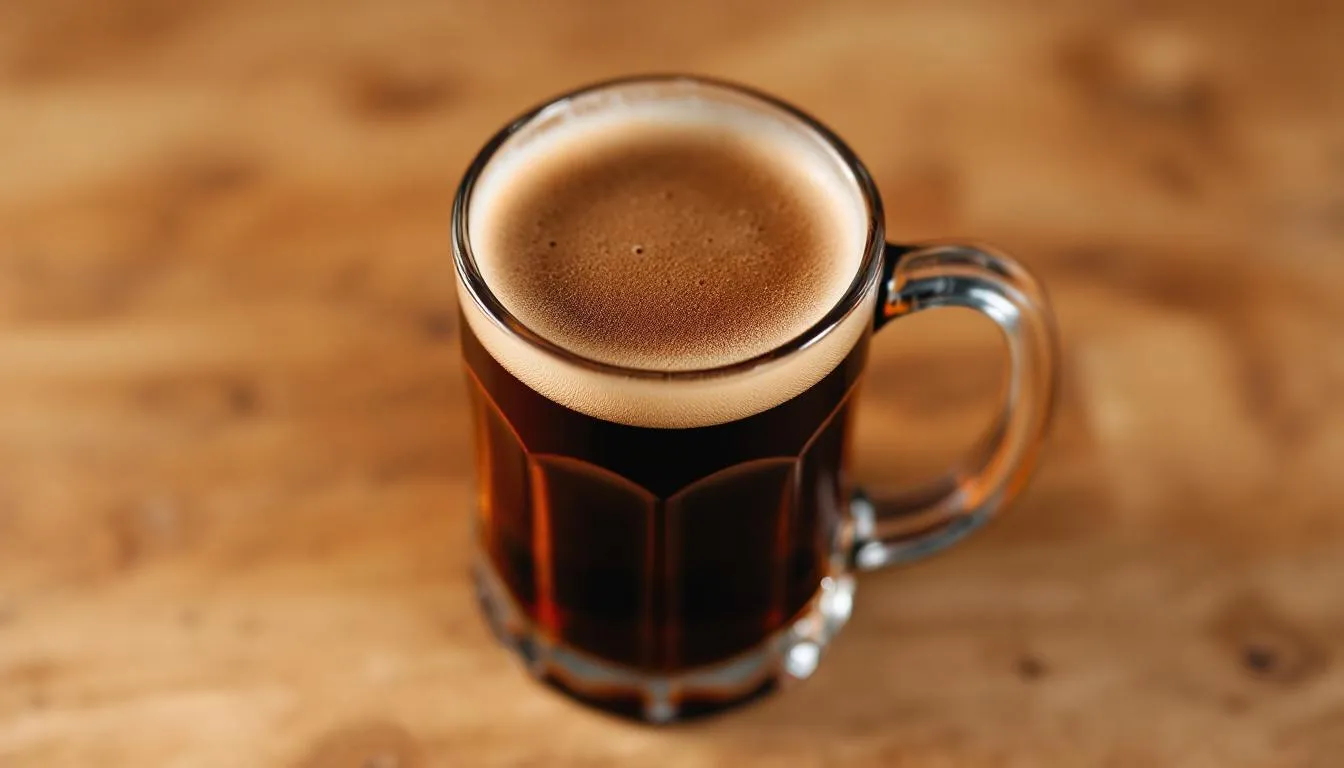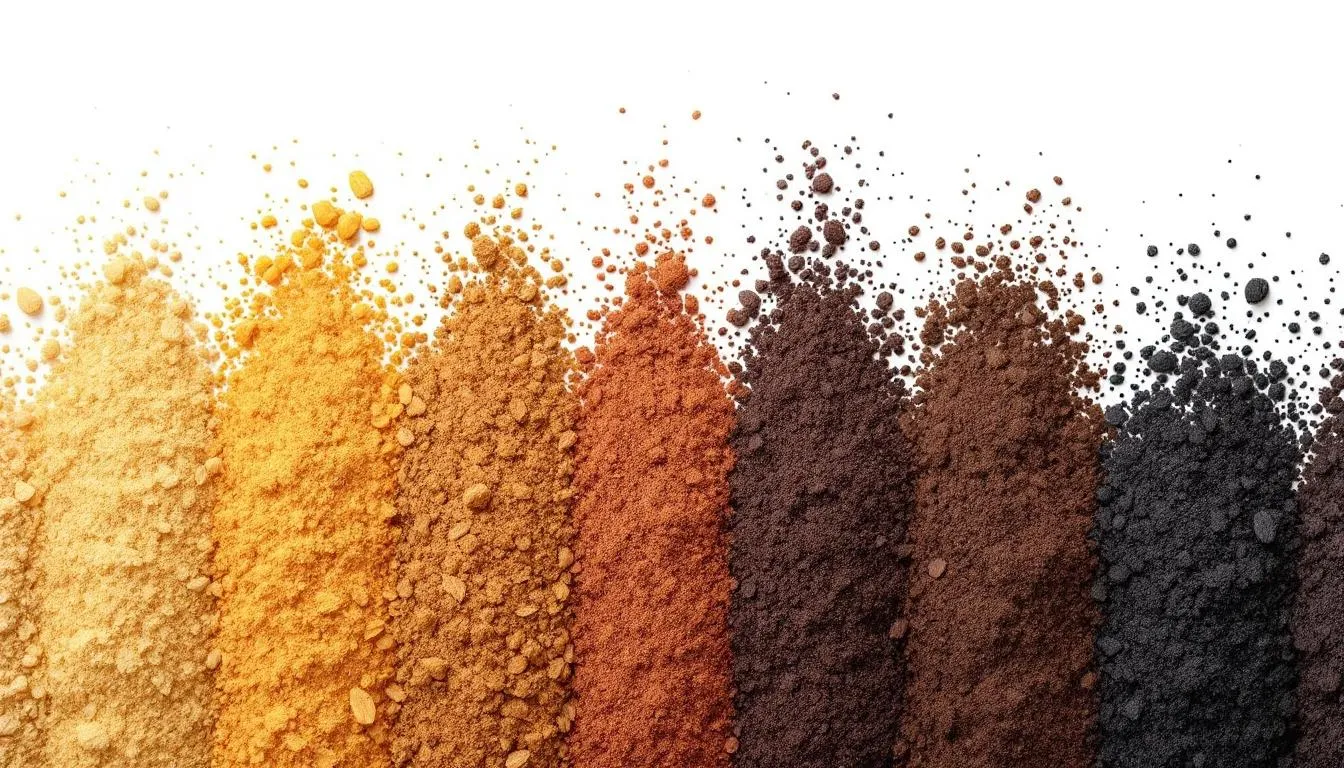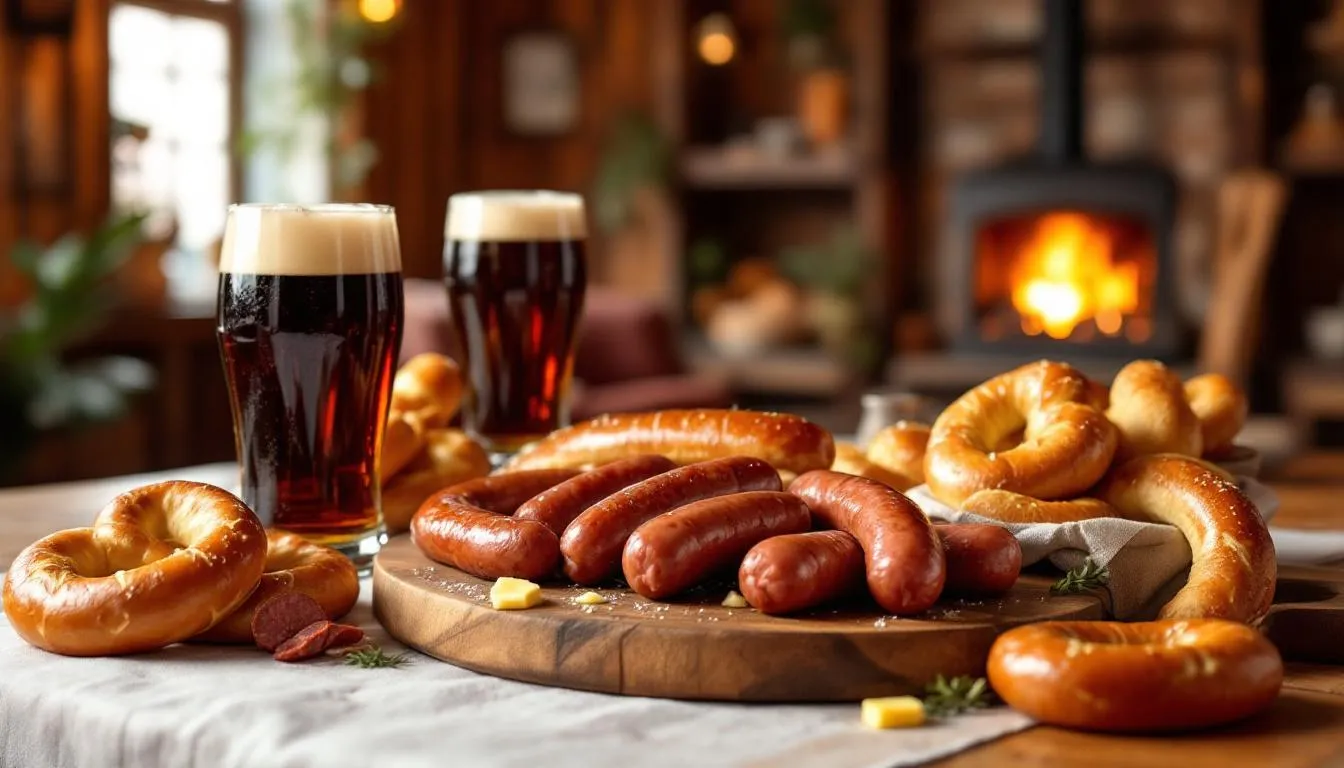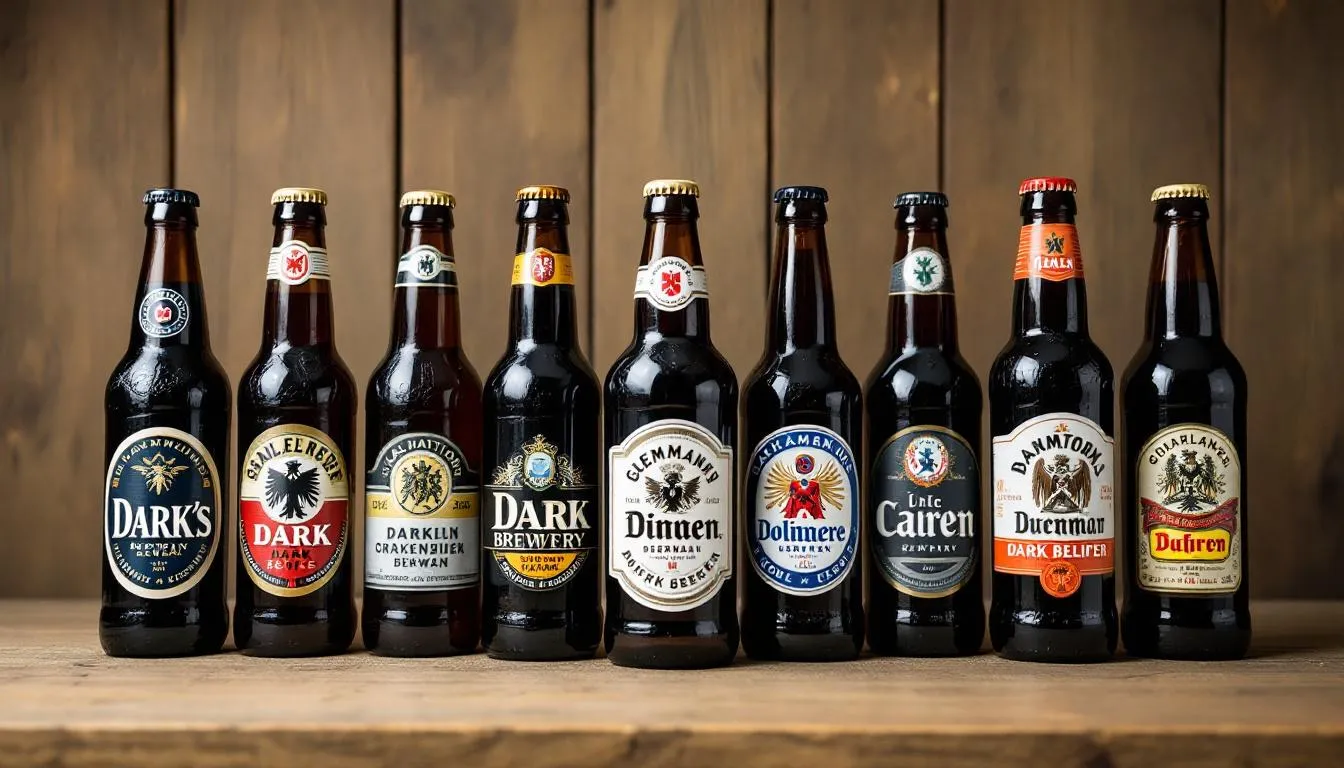When most beer enthusiasts think of German beers, golden pilsners and wheat beers often come to mind. However, long before pale lagers dominated Bavaria, there was a rich, malty dark lager that served as the region’s everyday beer. This traditional style, known as dunkel beer, challenges common misconceptions about dark beers being heavy or overpowering.
The dunkel beer style represents one of Germany’s most historic and underappreciated lager traditions. Despite its dark appearance, this beer offers surprising drinkability and complex malt flavors that have satisfied Bavarian palates for centuries. Understanding this classic style opens a window into German brewing heritage while revealing why many consider it the perfect introduction to darker lagers.
What is Dunkel Beer
Dunkel, the german word meaning “dark,” refers to a traditional German dark lager that originated in Bavaria. This beer style features a malt-forward character with moderate alcohol content typically ranging from 4.5 to 5.5% ABV, making it surprisingly approachable despite its imposing appearance.
The color range spans from deep copper to dark brown with distinctive reddish tints that catch the light beautifully in a glass. Unlike the roasted character found in stouts or porters, dunkel beer maintains a smooth, bread-like quality derived from specially kilned munich malts. This creates a complex flavor profile without harsh or burnt characteristics.

Historically, this traditional style served as Bavaria’s everyday beer long before lighter lagers gained popularity in the 19th century. Munich residents would consume dunkel lager by the liter in traditional beer halls, appreciating its rich maltiness and clean finish. The style’s decline began when brewing technology advanced enough to consistently produce pale beers, eventually leading to the dominance of styles like munich helles.
Today’s craft beer revival has brought renewed interest to this classic german beer style. Modern brewers appreciate dunkel’s technical challenges and the opportunity to showcase traditional brewing methods like decoction mash techniques.
History and Origins of Munich Dunkel
The munich dunkel style traces its origins to Munich and Bavaria, with brewing records suggesting similar beers existed around the time of the 1516 Reinheitsgebot beer purity law. This historic legislation, which restricted brewing ingredients to water, hops, malt, and later yeast, helped establish the foundation for authentic german beers including dunkel lager.
Munich’s unique water chemistry played a crucial role in developing the style’s characteristic flavor profile. The city’s calcium carbonate-rich water naturally enhanced the sweet, full-bodied character that defines quality dunkel beer. This geological advantage made Munich the ideal location for brewing darker malts, as the mineral content complemented the beer’s inherent richness.
Before 19th-century brewing advances, dunkel dominated Bavaria as the primary beer style. Munich breweries, including those operated by monasteries, perfected their recipes over generations. The style represented the pinnacle of bavarian brewing tradition, with each brewery developing subtle variations while maintaining the core characteristics that defined the category.
German immigration spread dunkel beer beyond Bavaria’s borders, particularly to regions like Franconia within Germany, and internationally to Mexico and South America. These migrations helped establish franconian versions and other regional interpretations that adapted to local ingredients and preferences while respecting the traditional style guidelines.
The modern craft beer movement has sparked a revival of this traditional style. Contemporary brewers study historical recipes and employ time-honored techniques to create authentic interpretations. This renaissance has introduced new generations to a beer style that once defined an entire region’s drinking culture.
Flavor Profile and Characteristics
Appearance
Munich dunkel presents a striking visual profile with colors ranging from deep copper to dark brown, often displaying beautiful red or garnet highlights when held to light. The beer typically pours with a creamy, light to medium tan head that demonstrates good retention and leaves attractive lacing on the glass.
Most commercial examples achieve excellent clarity, though some traditional brewery offerings may appear slightly hazy. The dark color comes primarily from munich malt rather than roasted malts, creating depth without the opaque black appearance of stronger dark beer styles.
Aroma
The aroma profile showcases rich toasted bread crusts from munich malts, creating an immediately inviting nose. Complex darker malt flavors emerge as chocolate, nuts, caramel, and toffee notes that suggest richness without overwhelming sweetness.
Clean lager fermentation character defines quality examples, with no fruity esters or off-flavors that would indicate improper brewing. Subtle spicy, floral, or herbal hop aromas may be present but remain firmly in the background, allowing malt character to dominate the aromatic experience.
Flavor
The flavor profile emphasizes malt-forward character with soft, complex darker malt flavors that avoid harshness. Toasted bread, chocolate, and biscuit notes from munich malt create the foundation, while mild caramel and nuttiness add layers without excessive caramel sweetness.
Low hop bitterness, typically in the low 20s IBU range, provides just enough balance to prevent cloying while maintaining the style’s malty focus. The overall impression leans decidedly toward maltiness rather than hop flavor, respecting the traditional german approach to this dark lager.
The finish remains clean and dry, characteristic of well-executed lager brewing. Unlike ales, which might retain fruity complexity, dunkel beer showcases the pure expression of malt flavors without competing fermentation character.
Mouthfeel
Medium to medium-full body provides substantial mouthfeel without excessive weight, creating the perfect balance for extended drinking sessions. The soft, dextrinous texture comes from careful malt selection and traditional brewing techniques that enhance the beer’s natural richness.
Moderate carbonation enhances drinkability while supporting the malt character. The carbonation level avoids the aggressive prickle that might distract from flavor appreciation while providing enough lift to keep the beer lively and refreshing.
Smoothness defines the overall drinking experience, with no astringency or harshness that would interfere with the beer’s inherent balance. This drinkable quality explains why bavarian beer halls traditionally served dunkel by the liter.
Brewing Ingredients and Process
German munich malt serves as the foundation, sometimes comprising up to 100% of the grist in traditional recipes. This specially kilned malt provides the characteristic bread-like, toasty flavors that define the style. The kilning process develops rich, complex malt flavors while avoiding the sharp roasted character found in darker specialty malts.
German pilsner malt often complements munich malt in modern recipes, typically making up 20-40% of the grain bill. This addition provides enzymes for conversion while slightly lightening the overall character without compromising authenticity.
Small additions of crystal malt contribute color and dextrins for enhanced body, though these must be used judiciously to avoid excessive residual sweetness. Some brewers incorporate carafa special ii for color adjustment without introducing unwanted roasted bitterness that would compromise the style’s smooth character.

Traditional german noble hops provide low bitterness and minimal aroma character. Hop varieties like hallertau, tettnang, or spalt deliver clean bitterness without competing flavors that would overshadow the malt profile. The brewing philosophy emphasizes restraint in hopping to maintain proper style balance.
German lager yeast strains ensure clean fermentation character essential for authentic dunkel beer. These yeasts work at cool temperatures, producing minimal esters while allowing malt character to shine through clearly.
Many traditional breweries employ decoction mashing to enhance melanoidin flavors and achieve the deep, complex character that distinguishes superior examples. This time-intensive process involves removing portions of the mash, boiling them separately, and returning them to develop additional malt flavors through maillard reactions.
Food Pairings
Dunkel beer pairs excellently with hearty bavarian cuisine and comfort foods, acting almost like liquid crusty dark bread as a meal accompaniment. The style’s maltiness complements foods that feature maillard reaction flavors from browning and caramelization.
Grilled meats, especially pork chops and various sausages, create natural synergy with dunkel’s toasted bread character. The beer’s moderate body stands up to substantial proteins while its clean finish refreshes the palate between bites.
Creamy dishes like clam chowder and macaroni and cheese benefit from dunkel’s ability to cut through richness while complementing comfort food flavors. The beer’s malt character bridges beautifully with cheese-based dishes, particularly those featuring aged or nutty varieties.

Traditional german fare represents ideal pairing territory. Sauerbraten, schnitzel, and roasted root vegetables all harmonize with the beer’s bread-like qualities. Soft pretzels and other baked goods create particularly successful combinations.
The style’s versatility extends to dessert pairings, where chocolate-based treats complement the beer’s subtle chocolate notes without overwhelming sweetness. Rich, nutty desserts also work well with dunkel’s complex malt profile.
Regional Variations
Munich-style dunkel represents the classic interpretation with balanced malt sweetness and clean lager character. This version emphasizes drinkability and approachable richness that made it bavaria’s everyday beer for centuries.
Franconian versions from regions like bamberg often feature darker color and more pronounced bitter character. These interpretations reflect local brewing traditions and water chemistry differences that create subtle but noticeable style variations.
Modern craft interpretations maintain traditional character while sometimes incorporating slight innovations in malt selection or hopping. The best examples respect the style’s fundamental principles while expressing individual brewery character.
Water chemistry differences across regions affect final flavor profiles significantly. Areas with softer water may produce more delicate interpretations, while regions with mineral-rich water create fuller-bodied examples that emphasize malt richness.
Contemporary german breweries continue producing traditional examples alongside craft interpretations, ensuring the style’s authentic character remains available for comparison and education.
Commercial Examples to Try
Ayinger altbairisch dunkel stands out as a classic european example widely available in the united states. This traditional bavarian brewery showcases the style’s essential characteristics with excellent balance and authentic character that serves as an ideal introduction to the category.
Hacker-pschorr alt munich dark represents another traditional munich brewery offering that demonstrates classic regional character. The brewery’s long history ensures authentic interpretation of this traditional style.
Chuckanut dunkel exemplifies how american craft breweries can successfully execute german lager styles. This brewery has earned recognition for technical brewing excellence and produces a dunkel that rivals european examples in quality and authenticity.

Ettaler kloster dunkel continues the monastery-brewed tradition that helped establish the style centuries ago. This example provides insight into historical brewing methods while maintaining relevance for modern palates.
Weltenburger kloster barock-dunkel represents another monastery tradition, offering complexity and depth that demonstrates the style’s potential when crafted with traditional methods and premium ingredients.
These commercial examples provide excellent starting points for exploring the dunkel beer style. Each offers slightly different interpretations while maintaining the core characteristics that define authentic german dark lager.
Style Comparisons
Munich dunkel differs significantly from bock styles through its more moderate alcohol content and enhanced drinkability. While bocks emphasize strength and intensity, dunkel prioritizes balance and sessionability that made it suitable for everyday consumption.
The style lacks the roasted flavors characteristic of schwarzbier, germany’s black lager. Where schwarzbier incorporates roasted malts for coffee-like character, dunkel relies on munich malts for bread-like complexity without harsh roasted notes.
Compared to czech dark lager, dunkel shows richer malt character and more prominent breadiness. Czech versions often display more hop character and lighter body, while german examples emphasize malt complexity and fuller mouthfeel.
Munich dunkel proves more malt-forward than typical dark lagers from other countries, which often balance dark malt character with more aggressive hopping. The german approach prioritizes showcasing malt flavors over achieving hop-malt balance.
The style emphasizes breadiness over the chocolate or coffee notes common in other dark beer categories. This distinction helps identify authentic dunkel character versus darker styles that rely heavily on roasted malt additions.
Understanding these comparisons helps beer enthusiasts appreciate dunkel’s unique position within the broader dark lager category and recognize quality examples that respect traditional brewing principles.
The dunkel beer style represents one of germany’s most accessible yet complex brewing traditions. Its surprising drinkability, rich history, and food-friendly character make it an excellent choice for those looking to explore beyond pale lagers. Whether you’re interested in traditional bavarian culture or simply seeking a well-balanced dark beer, the examples mentioned above provide perfect starting points for discovering this underappreciated classic. Next time you visit a well-stocked beer shop or german restaurant, consider ordering a dunkel – you might just discover your new favorite traditional style.

Leave a Reply